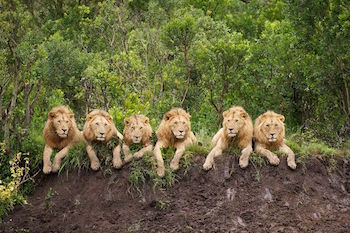Product Description
Bulgari, Rome, Revivalist “Lion Recumbent” wide bracelet, 18k gold with an elaborate woven edge detail and further decorated with 22 full figure resting lions, signed, c.1940’s



Length: 7 ½ inches x Width: 1½ inches
Weight: 5.55 Troy ounces / 172.7 grams / 111 pennyweights
*** The lion motif is modeled after the famous recumbent lions by Antonio Canova (Italy, 1757-1822), made for the monumental tomb of Clement XIII at St. Peter’s Basilica in Rome
Bulgari, Rome, Revivalist “Lion Recumbent” wide bracelet, 18k gold with an elaborate woven edge detail and further decorated with 22 full figure resting lions, signed, c.1940’s
HANS OFNER attr. (1880-1939) Austria
JOH. LÖTZ WITWE Klostermühle, Bohemia
Vase c. 1920
Handblown cobalt glass with undulating metallic chartreuse bands, four applied glass teardrops at the rim
For related examples by Ofner see: Innen Dekoration, “Lötz glass by Hans Ofner,” 1906.
For the identical glass technique see: Lötz: Böhmisches Glas 1880-1940, Vol. 1, Helmut Ricke and Ernst Ploil (Munich: Prestel-Verlag, 1989), p. 294, ill. no. 357.
H: 4 1/4″ x Dia: 4 1/4″
Price: $3,500
